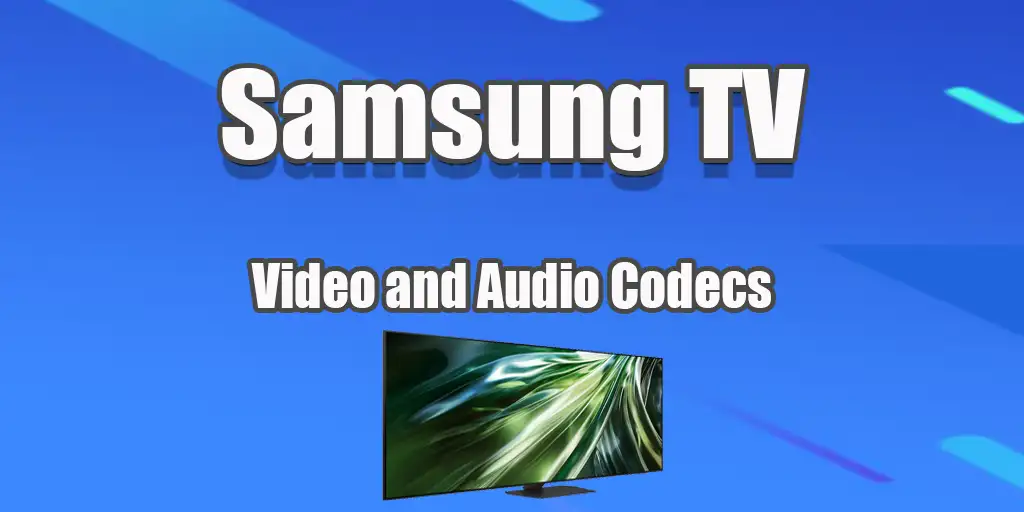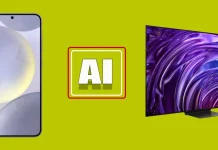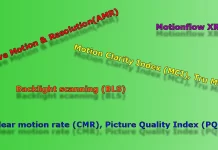If you’re trying to play a video on your Samsung TV and run into problems like missing sound, distorted audio, or a black screen, you’re not alone. These issues often occur when the TV can’t properly decode the audio or video — and the reason typically comes down to codec compatibility.
A file extension such as .avi or .mp4 doesn’t tell the whole story. These extensions refer to the file container, which can hold various types of video and audio data. The actual playback depends on the codecs used to compress and store that data. For example, audio inside an .avi file might be encoded using AAC, Dolby Digital+, or MP3 — and not all of these are supported by every Samsung TV.
Codec Support on Samsung TVs
Samsung Smart TVs — especially models from 2018 to 2025 — support a broad range of video and audio formats. Streaming platforms generally use universally supported codecs to ensure compatibility. However, when you’re watching a video from a USB flash drive or external hard drive, the TV might encounter a file compressed using an unsupported codec.
That’s why understanding which codecs your TV can handle is essential for smooth playback.
Commonly Supported File Formats and Codecs (2018–2025 Samsung TVs)
| File Extension | Supported Video Codecs | Supported Audio Codecs |
|---|---|---|
.avi | H.264, MPEG-4, Motion JPEG | AAC, MP3, WMA, AC3, HE-AAC, Dolby Digital+, OPUS, G.711 |
.mp4, .mov | H.264, HEVC, MPEG-4, AV1 | Same as above |
.mkv | H.264, HEVC, MPEG-4, Motion JPEG | Same as above |
.wmv, .asf | WMV9, VC-1 | WMA formats |
.ts, .trp, .tp | H.264, HEVC, MPEG-2 | Dolby Digital, AAC, MPEG |
.webm | VP8, VP9, AV1 | Vorbis |
.vob, .mpg, .mpeg, .vro, .m2ts, .mts | MPEG-2, H.264, HEVC | Dolby Digital, MPEG |
.3gp, .flv | H.263, H.264 | AAC, MP3 |
.rmvb | RV30/40 | RealAudio 6 |
Codec Limitations on Samsung TVs (2018–2025)
Although support is broad, Samsung TVs have some notable limitations — especially in models released after 2018:
- Video:
- H.264 (FHD): Supports Level 4.2 (FMO/ASO/RS not supported)
- H.264 (UHD): Level 5.1 supported (up to 4K resolution)
- HEVC (FHD): Level 4.1
- HEVC (UHD): Level 5.2, with resolution changes supported up to 4K
- HEVC (8K): Level 6.1 (for 8K models only)
- VC-1 Advanced Profile: Not supported
- MVC: Only partial support
- GMC (Global Motion Compensation): Levels 2+ not supported
- Audio:
- DTS: Not supported on most newer models
- WMA 1: Not supported
- WMA 10 Pro: Supported up to 5.1 channels, but not lossless
- AMR, QCELP: Not supported
- Dolby Digital Plus (DD+): 5.1 channels supported
- Sampling rates: Up to 48 kHz, depending on codec
Changes in Codec Support Over the Years
Samsung TVs produced before 2018 — especially those from 2015 to 2017 — had broader support for audio formats like DTS (including DTS Core, LBR, HD_MA, and HD_HRA). These TVs could play more file types, particularly DivX files with DTS audio. Starting in 2018, Samsung phased out DTS support in many models, which can affect playback for high-quality movie rips and Blu-ray backups.
Why This Matters for USB Playback
Streaming apps like Netflix or YouTube are optimized for smart TVs and rely on codecs that Samsung fully supports. But when you connect a USB stick or external hard drive, your TV must decode the media files itself. If the embedded codecs aren’t supported, you’ll see errors, experience audio issues, or get no playback at all.
Conclusion: Optimize Your Video Files for Samsung TV Playback
To ensure seamless playback on your Samsung TV:
- Use common formats like
.mp4or.mkv - Stick with widely supported codecs such as H.264 or HEVC for video, and AAC or Dolby Digital for audio
- Convert incompatible files using reliable video converters if needed
Understanding codec compatibility helps you avoid frustration and ensures your home media plays as expected — whether you’re streaming or watching from a USB device.






